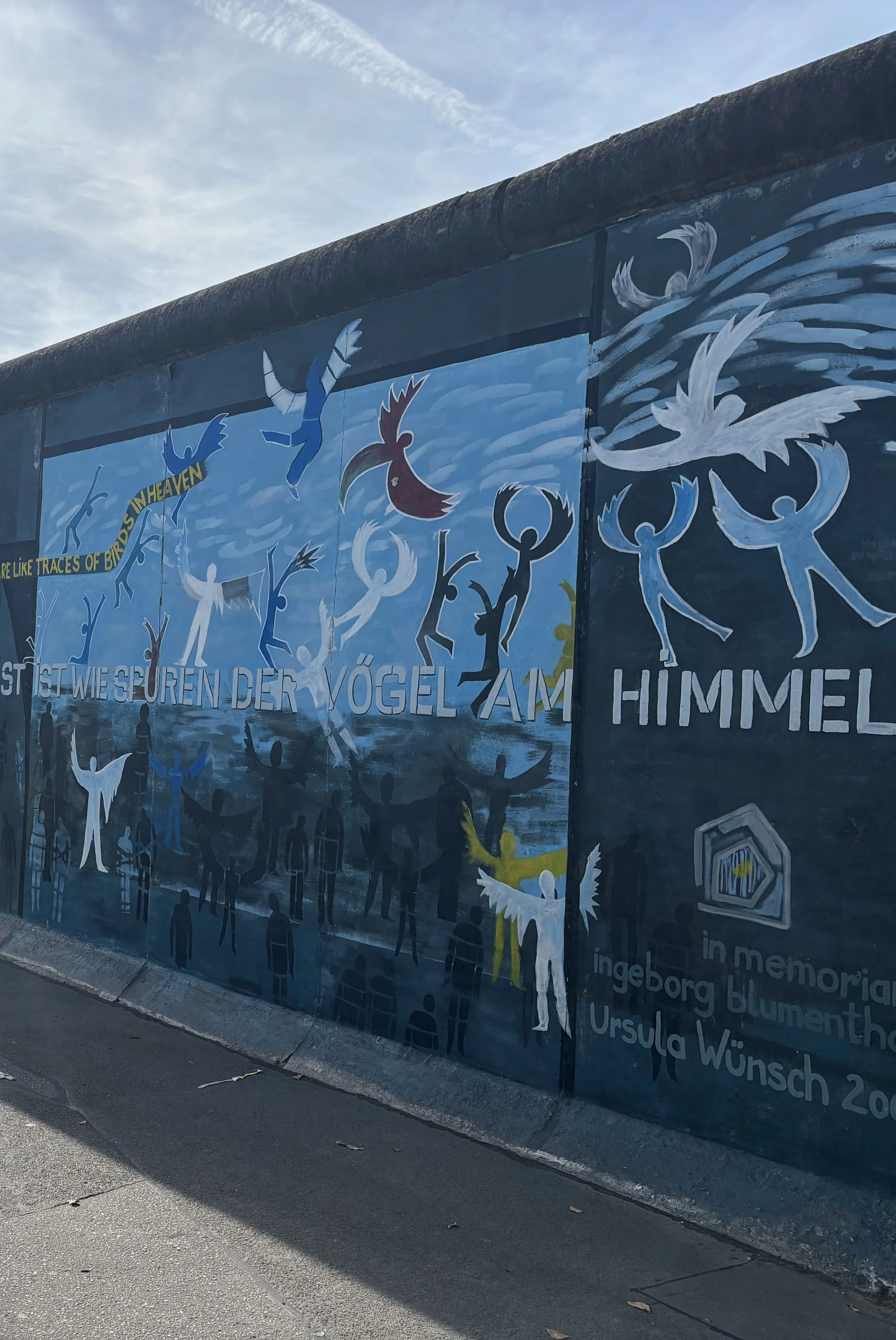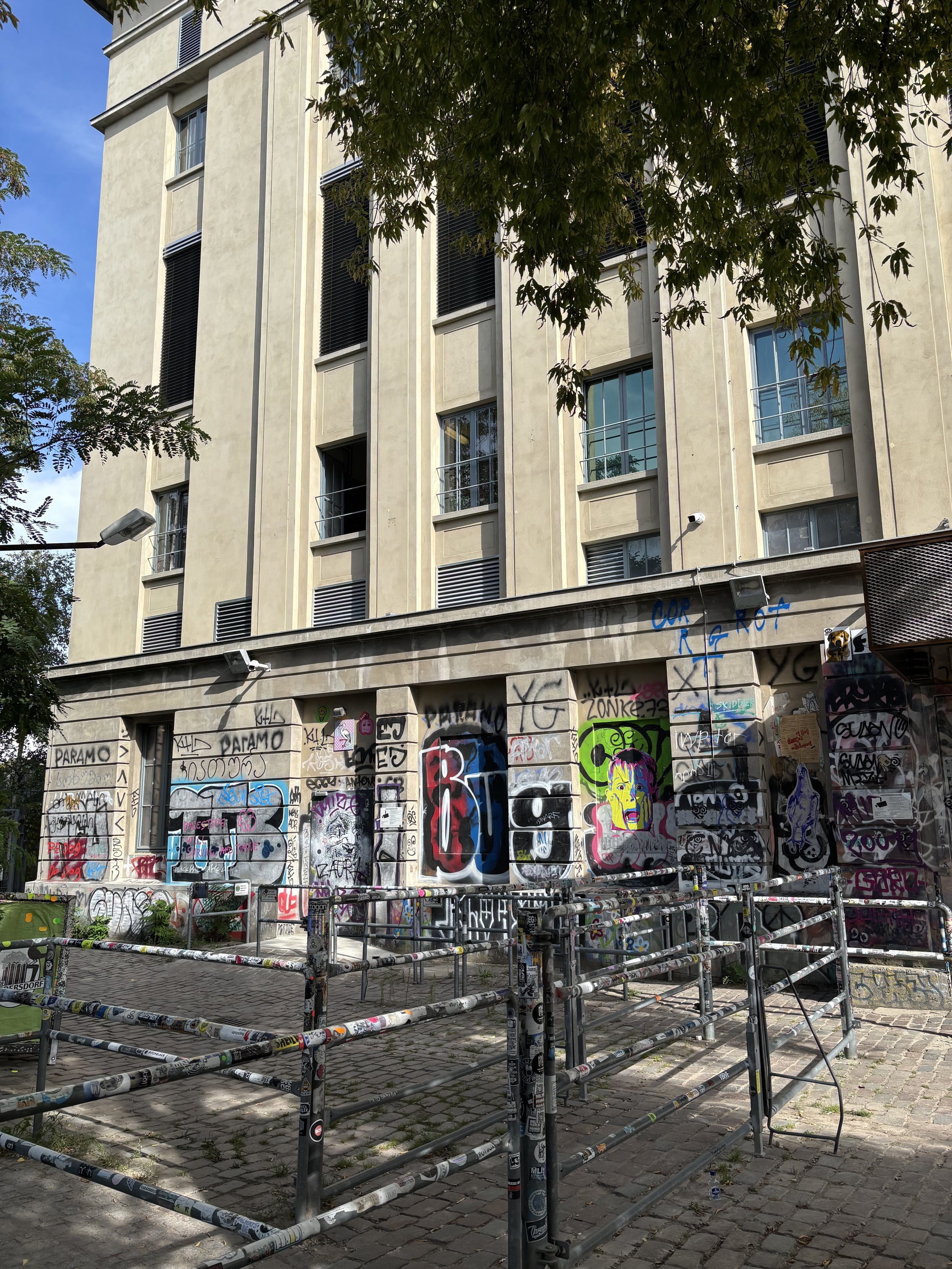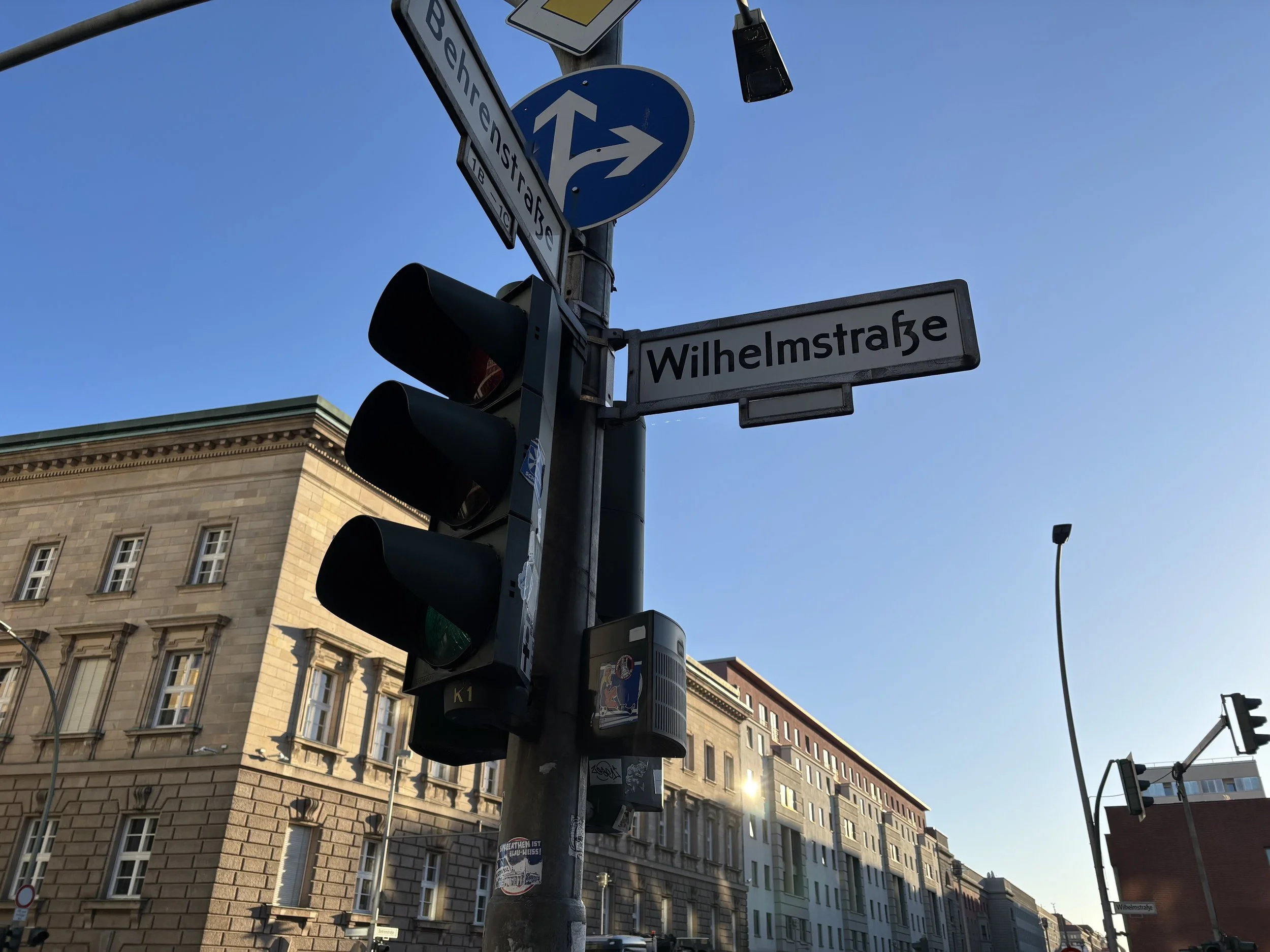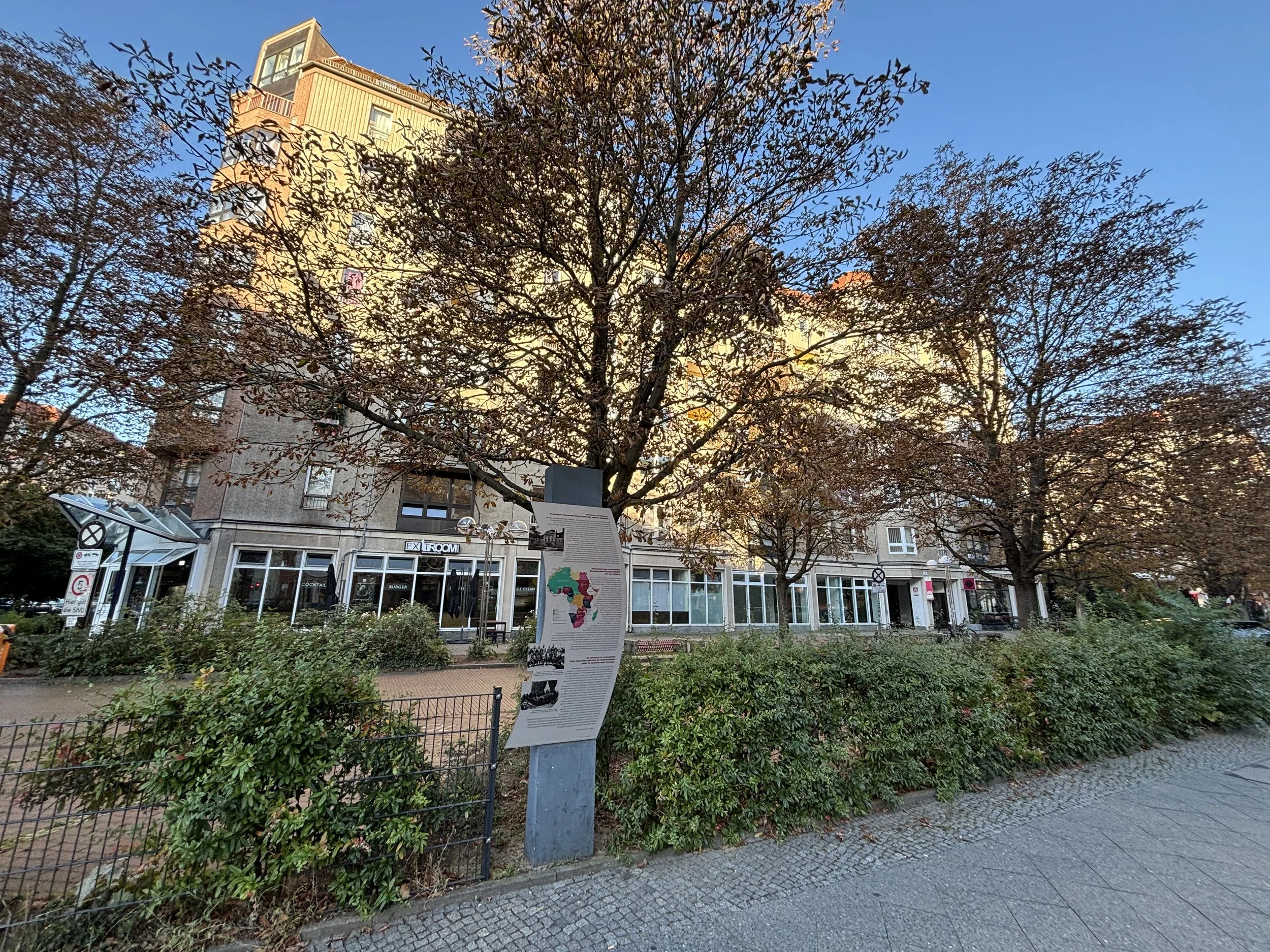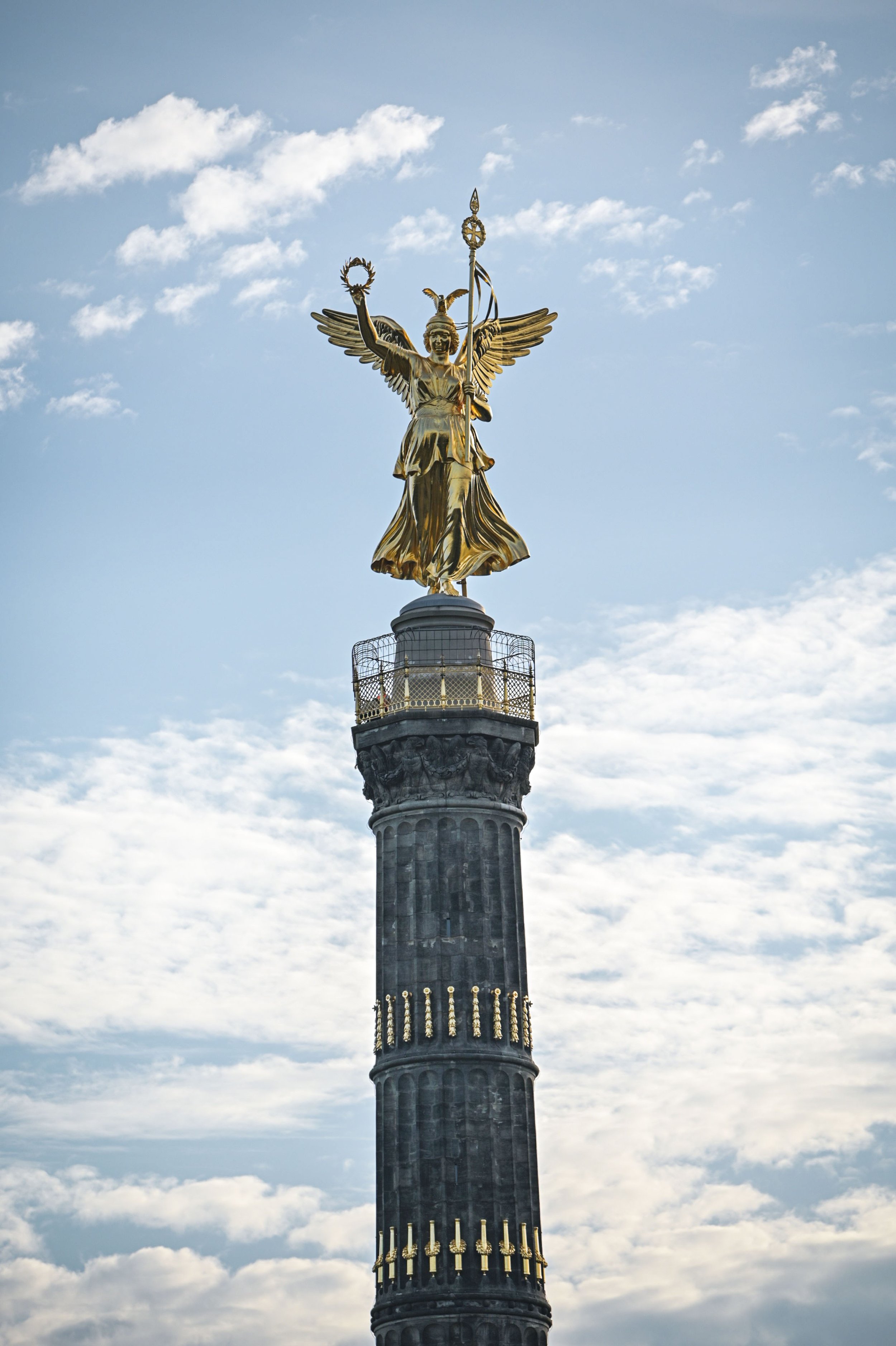Wilhelmstraße 92 | Berlin
Berlin Wall
Running through Berlin is like running through time. Perhaps this is why everyone should run the Berlin Marathon. The city has been stitched back together, but the seams still tug. The Berlin Wall may have fallen on November 9, 1989, yet the echo of those 155 kilometers of concrete that once severed Socialist East from Democratic West lingers everywhere—from the murals where tourists pose to the most ordinary of objects: traffic lights.
There, the Ampelmännchen—the portly little man in a wide-brimmed hat—still strides with arms swinging, a relic of East Berlin’s design. After the Wall came down, West Berlin wanted him replaced with their taller, sleeker figure. But in 2004, the city chose to keep him. Today, two-thirds of Berlin glows with his jaunty march on green or his firm warning on red. A Cold War remnant, now beloved, a fragment of division transformed into charm.
Ampelmännchen (Image Courtsey of https://www.ampelmann.de/en)
Architecture, too, carries memory. Allied bombings left much of Berlin in rubble; Soviet-backed planners rebuilt East Berlin quickly and cheaply with prefabricated concrete slabs—gray, severe, and unadorned. These Plattenbau apartments still stand along wide boulevards, not elegant, but honest to their moment: monuments to survival, to efficiency over ornament. Their sharp edges echo in the city’s culture. Berghain, Berlin’s infamous techno club and my longtime favorite, is a cathedral of this aesthetic: metallic, industrial, uncompromising, stripped of embellishment—techno’s heartbeat cast in concrete. And like the city itself, what was once necessity has become, in its way, art.
Berghain Techno Temple
Yet Berlin holds another history, one less visible, less voiced. The Wall is everywhere—memorialized, commodified, remembered. Africa’s story, and Berlin’s role in shaping it, is quieter. To find it, you must run differently, searching not for monuments but for silences.
Growing up in Africa, we learned only two things about Berlin in school. The first was the Wall—abstract, distant, relevant only for the exam. As my mother once said, “We only knew about the Berlin Wall to pass the European History test; beyond that, I don’t remember much else.” The second was unforgettable: the Berlin Conference of 1884–1885 (a.k.a The Congo Conference). Every African child learns the name Otto von Bismarck, the chancellor who convened Europe’s powers to slice a continent.
Wilhelmstraße and Behrenstraße
My run led me to Wilhelmstraße 92, the address where it happened. Today, it is unremarkable: shops, apartments, people hurrying past. Only a discreet plaque betrays its past. A quiet marker on an ordinary street, it asks nothing of the passerby. Yet for those who pause, it carries the weight of a continent. Here, in November 1884, Bismarck gathered fourteen nations at the urging of Belgium’s Leopold II. For months they debated, before signing the General Act of Berlin in February 1885. Though European incursions into Africa dated back centuries, this act formalized the “Scramble” and sealed the continent’s fate. On paper, Africa was divided like a Black Forest Cake (Schwarzwälder Kirschtorte)—precise, neat, and sweet to European appetites. The borders were drawn with rulers, ignoring rivers, languages, kingdoms, and faiths—as if no people lived there at all. And while Berliners eventually tore down their Wall, Africans are still living inside some of the lines Bismarck’s conference etched. It marked the beginning of some of the most brutal conquests a continent has endured, and its consequences remain.
Wilhelmstraße 92
And yet, as I run around Berlin, I reflect— Berlin is also a city that has shown the world what remembrance can look like. It has faced its darkest chapters—the Holocaust, the Berlin Wall—with an honesty that few nations have dared. Memorials, museums, and markers across the city stand as both apology and vow: never again. Africa’s story here is less monumentalized, but not entirely absent. It is emerging slowly—in plaques, in exhibitions, in the growing conversations within German society about how to reckon with its colonial past.
Perhaps that, too, is Berlin’s nature: to confront history piece by piece with depth and seriousness once it begins. The Berlin Wall teaches us that borders, however permanent they may seem, can fall. The plaque on Wilhelmstraße reminds us that some borders endure, drawn not in concrete but on maps. Berlin continues to wrestle with all of them, and in doing so, it gives us a city where memory is never finished, but always in motion like this run.
Siegessäule (Victory Column) with a statue of the goddess Victoria

